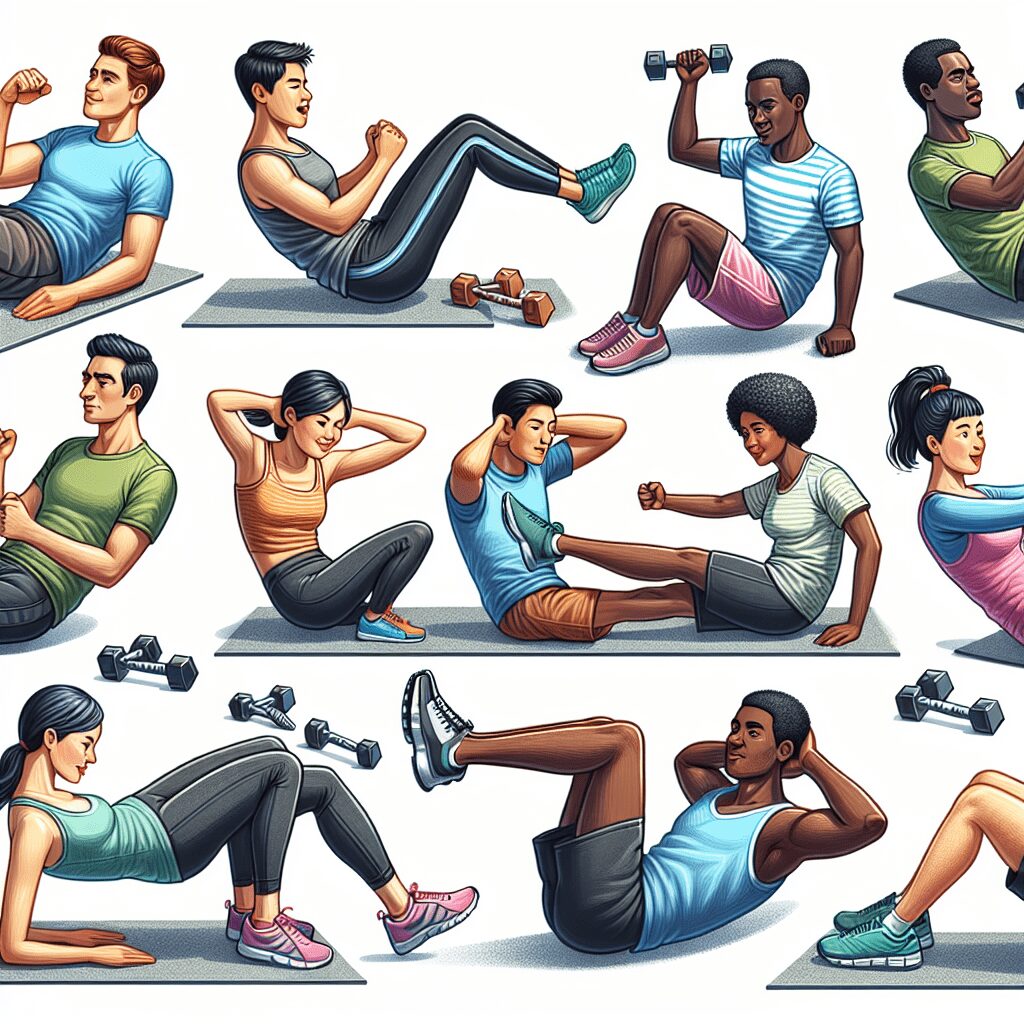Chapter 1: Understanding Belly Fat
Belly fat, or visceral fat, is not just a cosmetic concern; it poses serious health risks. Located deep within the abdomen, visceral fat surrounds vital organs and contributes to metabolic syndrome, diabetes, and heart disease. Understanding the nature of belly fat and where it comes from is crucial for effective weight loss and overall health improvements.
Several factors contribute to the accumulation of fat in this region, including:
- Diet: High-calorie diets rich in sugars, refined carbs, and unhealthy fats can lead to weight gain.
- Lack of Exercise: Sedentary lifestyles contribute significantly to belly fat.
- Hormones: Stress and hormonal changes can lead to increased fat storage, especially in women.
- Genetics: Some individuals are genetically predisposed to store fat in their belly area.
To combat these factors, a multifaceted approach that includes nutrition, exercise, and lifestyle changes is essential for transforming the belly from flab to fab.
Chapter 2: The Importance of Nutrition
Exercise alone cannot lead to significant fat loss; it must be complemented by proper nutrition. The connection between diet and belly fat is well established. To achieve optimal results, consider following these dietary guidelines:
- Whole Foods: Focus on whole, unprocessed foods that are rich in nutrients, such as fruits, vegetables, whole grains, and lean proteins.
- Healthy Fats: Include sources of healthy fats, like avocados, nuts, and olive oil, which can help in reducing cravings and improving satiety.
- Limit Sugars: Cut down on sugars and refined carbohydrates. Sugary drinks and processed snacks are major culprits in belly fat accumulation.
- Increase Protein: Protein helps build muscle and can also keep you feeling full longer.
- Hydrate: Drinking plenty of water aids digestion and can help reduce bloating.
Making small shifts in your eating habits can have profound effects on your body composition and belly fat percentages.
Chapter 3: Building a Robust Exercise Routine
A successful fitness routine is not just about random workouts but a balanced approach that includes cardiovascular exercises, strength training, and flexibility work.
Key Components of an Exercise Routine
- Cardiovascular Exercise: Engaging in aerobic exercises like running, cycling, or swimming for at least 150 minutes a week helps burn calories.
- Strength Training: Building muscle not only tones the body but also boosts metabolism. Aim for two to three strength training sessions per week.
- Core Workouts: Directly targeting the abdominal region is essential. Integrate exercises that focus on all parts of your core: rectus abdominis, obliques, and transverse abdominis.
The combination of these elements will not only help you lose belly fat but also contribute to your overall fitness and health.
Chapter 4: Powerful Fat-Burning Exercises
Now that we understand the basics, let’s dive into specific fat-burning exercises that can help transform your belly from flab to fab. Each exercise is designed to engage your core while also maximizing calorie burn.
-
Plank: One of the best exercises for core strength. Hold a 30- to 60-second plank, ensuring your body forms a straight line from head to heels.
-
Bicycle Crunches: Lying on your back, mimic a cycling motion while touching opposite elbows to knees. Perform at least 15-20 reps.
-
Jumping Jacks: A simple yet effective cardio workout that raises your heart rate. Aim for 30 seconds to a minute.
-
Burpees: This full-body workout is demanding but extremely effective for fat loss. Start standing, drop into a squat, kick your feet back into a plank, return to squat, and jump up.
-
Mountain Climbers: A dynamic exercise that targets both the core and cardiovascular system. Aim for 30 seconds of rapid movement.
-
High-Intensity Interval Training (HIIT): Incorporate intervals of intense activity followed by short rest. HIIT workouts can be effective for fat loss in a shorter amount of time.
-
Russian Twists: While seated, lean back slightly and twist your torso side to side. Hold a weight for added intensity.
-
Leg Raises: Lie flat on your back and raise your legs while keeping your core engaged. Aim for 10-15 reps.
Implementing these exercises into your routine three to four times a week can significantly impact the appearance and health of your abdominal area.
Chapter 5: The Role of Consistency
Consistency is key in any fitness journey. The body needs time to adapt to new exercises and dietary habits. Sticking to a routine will yield long-term results. Here’s how to maintain that consistency:
-
Set Realistic Goals: Instead of aiming for extremes, set achievable fitness goals, such as losing 1-2 pounds a week or successfully completing your workouts for a month.
-
Schedule Workouts: Treat your exercise time like any other important appointment. Block out specific times during your week and prioritize them.
-
Keep a Journal: Document your meals and workouts. A tracking system can highlight your progress and help identify areas for improvement.
-
Find Support: Joining a fitness group, having a workout buddy, or even hiring a personal trainer can provide motivation and accountability.
-
Stay Adaptable: Life can throw curveballs—stress, schedule changes, or injuries. Adapt your plan but maintain your commitment to healthy living.
Remember, the journey from flab to fab doesn’t happen overnight. With dedication and persistence, the results will come.
Chapter 6: Monitoring Progress
Tracking your progress is vital for staying motivated. Here are some strategies for measuring improvements beyond just scale weight:
-
Photographs: Take before-and-after photos to visually document your journey. Sometimes, changes occur that the scale doesn’t reflect.
-
Measurements: Use a measuring tape to record body measurements—waist, hips, thighs—to see reductions through fat loss.
-
Fitness Levels: Document how your workouts evolve over time. Improving endurance, strength, or flexibility is a great indicator of your progress.
-
Energy Levels: Monitor how you feel. Increased energy throughout the day can signify that your fitness and nutrition choices are beneficial.
-
Health Markers: Pay attention to health markers like blood pressure, cholesterol, and blood sugar levels, especially if you consult with a healthcare provider.
Celebrate your wins, no matter how small. Recognition of progress boosts motivation and reinforces the habit of living a healthier lifestyle.
Chapter 7: The Importance of Rest and Recovery
In the quest for fat loss and fitness, many neglect the necessary element of rest and recovery. Exercise produces stress on the body, and recovery is vital for muscle repair and reinforcement.
Key Components of Rest and Recovery
-
Sleep: Aim for 7-9 hours of quality sleep each night. Poor sleep can lead to increased cravings and hinder weight loss.
-
Rest Days: Schedule rest days or lighter workout days to allow your body to recuperate.
-
Active Recovery: Engage in low-impact activities such as walking, yoga, or stretching to promote blood flow and recovery.
-
Nutrition: Post-workout nutrition plays a critical role in recovery. Ensure you’re consuming protein and healthy carbs after your workouts.
-
Hydration: Maintaining proper hydration levels aids recovery and good bodily function overall.
By integrating these recovery principles into your fitness regimen, you support your body in achieving and maintaining results.
Chapter 8: Cultivating a Healthy Mindset
Last but not least, cultivate a healthy mindset throughout your transformation journey. The importance of mental health and positivity in achieving fitness goals cannot be overstated.
-
Practice Mindfulness: Engage in mindfulness activities, such as meditation or deep-breathing exercises, to reduce stress and improve focus.
-
Positive Affirmations: Use positive affirmations to counter any negative thoughts or self-doubt that may arise during your journey.
-
Surround Yourself with Positivity: Seek encouragement from family, friends, and like-minded individuals who support your goals.
-
Focus on Non-Scale Victories: Celebrate gains in strength, endurance, and energy—these are just as vital as aesthetic changes.
-
Embrace the Journey: Understand that transformation takes time. Enjoy each step of the process, including its challenges, as they contribute to your growth.
A resilient mindset can significantly influence your results and overall experience on the path from flab to fab.
Conclusion
Transforming your belly from flab to fab is a multifaceted journey that requires dedication, persistence, and the right tools. Through proper nutrition, an effective exercise routine, consistent efforts, and a positive mindset, you can achieve your belly fat-loss goals while enhancing your overall health.
Understanding the significance of belly fat, maintaining a strong focus on nutrition, engaging in powerful fat-burning exercises, and fostering a supportive network will provide you with the foundation needed for a successful transformation. Always remember the importance of rest and recovery, as these elements are essential for sustaining long-term results.
Embarking on this journey is not just about achieving a look—it’s about fostering a healthier lifestyle and well-being. Celebrate every victory, set new challenges for yourself, and embrace the beautiful journey of self-discovery and improvement.
FAQs
1. How quickly can I expect to see results?
Results vary from person to person. With commitment, you may start seeing changes in body composition within 4-6 weeks.
2. Do I have to do all the fat-burning exercises listed?
No, you can select exercises that you enjoy and feel comfortable doing. Variety can prevent boredom and contribute to long-term adherence.
3. Can I still have treats while trying to lose belly fat?
Absolutely! Moderation is key. Enjoy treats occasionally to avoid feeling deprived, which can lead to binge eating.
4. Is cardio or strength training more effective for belly fat loss?
Both are important! Cardio helps with calorie burn, while strength training builds muscle—which boosts metabolism.
5. What role does stress play in belly fat accumulation?
High stress can lead to the release of cortisol, a hormone linked to fat storage around the abdomen. Practicing stress management techniques can help mitigate this.
6. Should I consult a doctor before starting a new exercise routine?
It’s a good idea, especially if you have existing health concerns or have been inactive for an extended period.
7. How many calories should I consume for fat loss?
Caloric needs vary based on activity level, age, weight, and gender. A general guideline is to create a deficit of 500-1000 calories for safe weight loss, aiming for 1-2 pounds per week.
8. What if I hit a plateau in my progress?
Plateaus are common. You might need to reassess your diet and adjust your exercise routine. Adding variety and increasing workout intensity can help break through a plateau.
Disclaimer: I may earn a commission from qualifying purchases as an affiliate. Please note that I only recommend products I believe will provide value to my readers.









